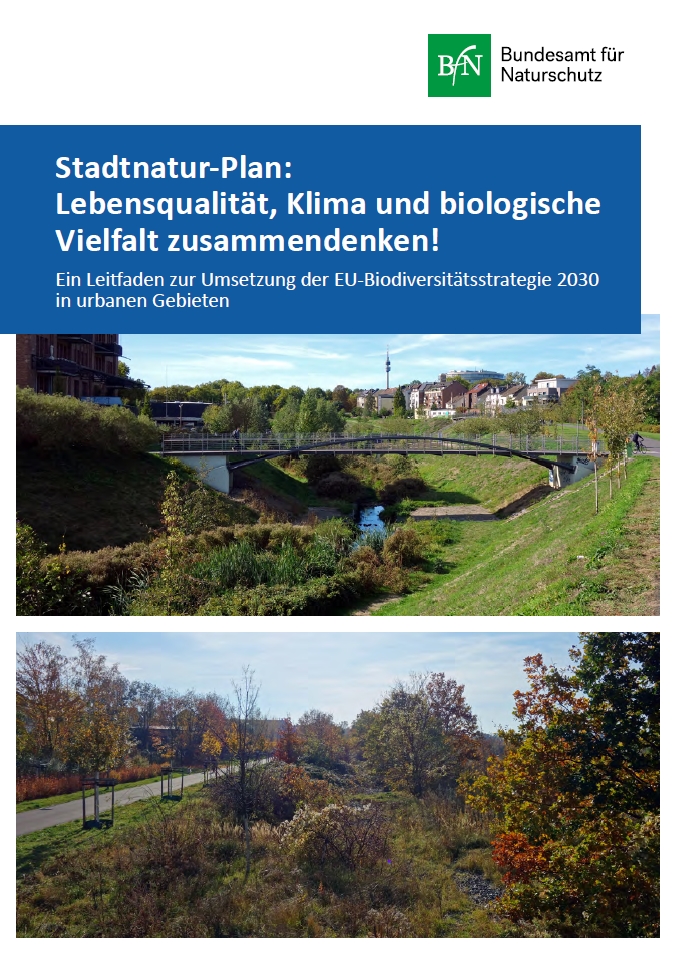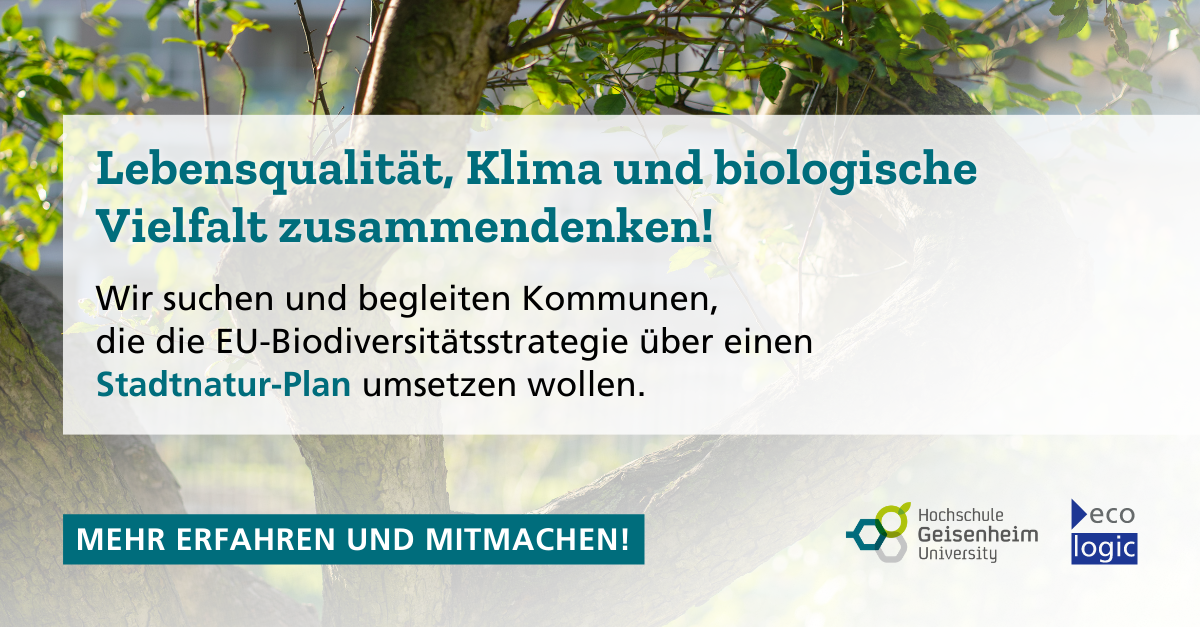Städte grün und vielfältig (um)gestalten
Praxisleitfaden für Kommunen zur Berücksichtigung von biologischer Vielfalt in Gebieten der Städtebauförderung
- Publication
- Citation
Bundesamt für Naturschutz (Hrsg.) (2024): Städte grün und vielfältig (um)gestalten. Praxisleitfaden für Kommunen zur Berücksichtigung von biologischer Vielfalt in Gebieten der Städtebauförderung. Bonn.
In the context of increasing environmental challenges, the urban development program is calling for greater integration of biodiversity and urban nature into urban development. The new practical guidance "Green and diverse urban (re)design" shows how local authorities can implement concrete measures to promote ecological diversity in urban areas. From the creation of new green spaces and the naturalization of bodies of water to the greening of roofs and façades, the guide offers practical recommendations and illustrative examples. A comprehensive checklist helps to review and optimize existing urban development plans in terms of their suitability for biodiversity.
The growing importance of urban nature and biodiversity
Against the backdrop of climate change, the loss of natural habitats and the associated impact on the quality of life of city dwellers, the promotion of urban nature and biodiversity in urban areas is becoming increasingly important. Cities not only provide habitats for people, but also retreats for numerous plant and animal species. Taking ecological aspects into account in urban planning is therefore essential to ensure the long-term sustainability of urban habitats.
Integrated approaches and measures in urban development funding
Urban development funding is an important instrument for promoting biodiversity in urban areas. It offers numerous opportunities to enhance urban green spaces, create near-natural habitats and integrate ecological aspects into urban planning. The guidelines developed as part of the "Considering biodiversity in urban development funding (BioViBeS)" project provide concrete measures and practical examples that can be implemented by local authorities and planners to promote urban nature.
Practical recommendations for the promotion of biodiversity
The guide contains numerous specific measures designed to promote biodiversity in urban areas. These include the creation and enhancement of green spaces, the integration of near-natural elements into urban planning and the naturalization of bodies of water. Particular importance is attached to the maintenance and adaptation of existing green spaces in order to increase their ecological value. Other recommended measures include the greening of roofs and façades, the creation of flowering areas and near-natural meadows, as well as the design of urban spaces that provide suitable habitats for people as well as animal and plant species.
Objectives and practical application
A central objective of the guidelines is to provide municipal stakeholders, specialist planners and employees in green space and environmental agencies with practical recommendations and instructions on how biodiversity can be taken into account and promoted in urban development areas. Particular attention is paid to the networking of green spaces in order to create corridors for flora and fauna. These measures not only contribute to the preservation of biodiversity, but also improve the microclimate, offer protection against extreme weather events and increase the quality of life of city dwellers.
Project information
The practical guidance "Making cities green and diverse" was developed as part of the "BioViBeS" project, which was funded by the Federal Agency for Nature Conservation (BfN). It offers local authorities valuable guidance on integrating biodiversity into urban development projects and supports the implementation of sustainable urban development concepts.



